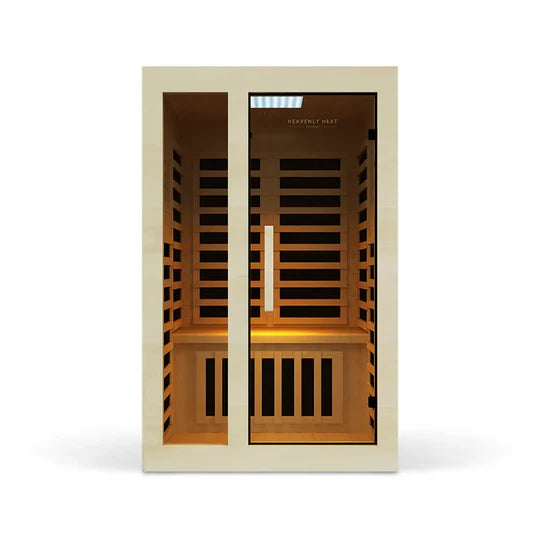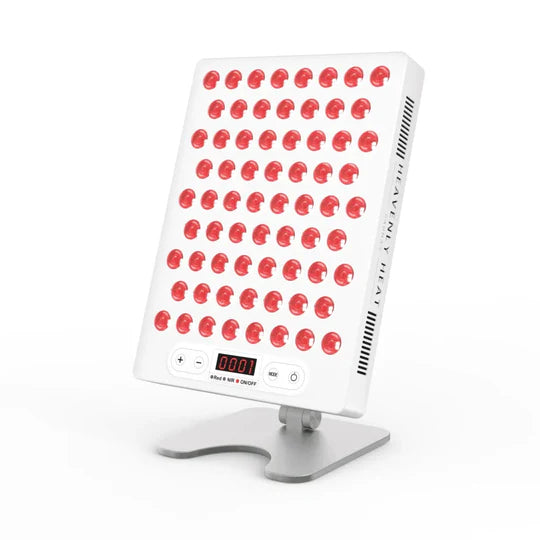What Do Most People Wear During a Cold Plunge?

Taking a cold plunge can feel refreshing and boost your energy, but figuring out what to wear might be a little confusing, especially if you're new to it.
This guide will help you choose the best outfit for your cold plunge, so you can stay comfortable and make the most of your chilly dip.
Table of contents
Importance of Dressing Appropriately for a Cold Plunge
Dressing appropriately for a cold plunge is crucial for safety and comfort. According to Dr. Tracy Zaslow, cold-immersion tubs can be beneficial, but it's important to consult a doctor before trying them due to risks like frostbite, hypothermia, and even heart issues.
The right clothing can help minimize these risks. When you emerge from the cold plunge, Dr. Zaslow recommends immediately removing wet clothes and layering up with warm, dry garments.
This helps regulate your body temperature and prevent complications. Always ensure you're prepared for both the plunge and recovery phase to stay safe.
What to Wear in a Cold Plunge for Men?
For a cold plunge, men should wear swim trunks or compression shorts for comfort. If the water is very cold, a wetsuit can help keep you warm.
Choose something that feels comfortable and allows you to move easily as your body adjusts to the cold.
What to Wear in a Cold Plunge for Women?
For a cold plunge, women should wear a swimsuit or bikini. If the water is very cold, a wetsuit can provide extra warmth.
What Not to Wear in a Cold Plunge?
Avoid wearing Heavy Clothing
Heavy clothing traps water and becomes a burden in the cold plunge, weighing you down and making movement difficult.
Materials like wool, denim, or thick polyester absorb water, making it harder to stay comfortable or safe. Instead, choose light, quick-drying fabrics like synthetic blends or swimwear that won't retain water.
Avoid Cotton
Cotton absorbs and holds onto water, leaving you feeling cold, heavy, and uncomfortable during a plunge.
When wet, cotton doesn’t insulate well, making your body lose heat faster. This can be risky in cold water, where maintaining body temperature is crucial.
Opt for alternatives like neoprene or moisture-wicking fabrics designed to handle wet conditions effectively.
Remove Jewelry before the cold plunge
Jewelry can react to cold water, causing discomfort or even skin irritation. Rings, bracelets, or necklaces can also get snagged or lost, creating unnecessary stress during your plunge. To keep your jewelry safe, place it in a secure container or locker before entering the water.
No Heavy Footwear
Heavy footwear makes it harder to move freely and can become waterlogged, increasing the risk of slips or strain. Shoes like boots or thick-soled sneakers are not ideal for cold plunges
No Perfumes or Lotions
Perfumes and lotions can leave residues in the water, which might irritate your skin or affect others using the plunge.
The chemicals can also react differently in cold water, leading to unexpected odors or discomfort.
No Electronic Devices
Bringing electronic devices to a cold plunge is risky, even if they claim to be waterproof. Cold water can damage devices, and handling them while wet increases the chance of dropping them. It's better to leave devices safely outside and focus on enjoying the moment without distractions.
No Heavy Hair Products
Heavy hair products, like gels or oils, can wash off in the water, leaving residue that affects the plunge's cleanliness. These products can also make your hair feel sticky or unpleasant in cold water.
Additional Items to Bring Along for the Cold Plunge
Towel
A towel is essential for a cold plunge to dry off quickly and stay warm after exiting the water. Microfiber towels are ideal as they’re lightweight, fast-drying, and absorbent.
Bringing multiple towels can be helpful, one for drying and another to sit on. While regular bath towels work, oversized ones offer better coverage and warmth.
Warm Clothing
Warm clothing helps your body regain heat after a cold plunge, preventing chills or discomfort. Layered options like hoodies, thermal leggings, and socks are excellent choices.
Wool or fleece materials work best for retaining heat. Don’t forget gloves and a hat to protect your extremities from the cold.
Thermometer
A thermometer is useful for ensuring the water temperature is suitable and safe for cold plunging. Digital or floating thermometers are accurate and easy to use. Always measure the water before plunging to avoid temperatures that are too extreme.
Ear Plugs
Ear plugs protect your ears from cold water and reduce the risk of discomfort or infections. Silicone or waterproof plugs work best as they form a tight seal. Insert them gently to ensure a snug fit without irritation.
Hygiene Considerations During a Cold Plunge
Shower before the cold plunge
Taking a shower before a cold plunge is essential for keeping the water clean and fresh for everyone using it.
It removes sweat, oils, and any dirt from your body, preventing them from contaminating the plunge. This simple step helps maintain hygiene and ensures a better experience for all participants.
Wear sandals or water shoes
Wearing sandals or water shoes protects your feet from slipping on wet surfaces and keeps them clean from bacteria that might linger near the plunge.
These shoes provide extra grip and safety, especially in public or shared facilities where germs can spread easily. By wearing them, you’re taking a simple precaution to keep your feet safe and the cold plunge area more sanitary.
Shower after the cold plunge
After a cold plunge, showering helps your body warm up while rinsing off any bacteria or particles that might have clung to your skin during the dip.
A quick rinse also prevents dry skin or irritation caused by lingering cold plunge water. Ideally, wait about 10–15 minutes before showering to let your body naturally adjust to room temperature before introducing warm water.
Clean the equipment
Cold plunge equipment needs cleaning after every use to prevent the buildup of bacteria or algae. Wiping it down after each session keeps the surface sanitary and ready for the next use. Regular cleaning also extends the life of your equipment and ensures the best hygiene standards.
Change the water regularly
Changing the water in your cold plunge every week, or sooner if heavily used, is vital for hygiene. Fresh water minimizes the risk of bacteria, algae, or bad odors from forming. Neglecting water changes can lead to skin irritation or infections.
Cold Plunge Etiquette
Check the Facility's Rules
Understanding a facility’s rules ensures a smooth and enjoyable cold plunge experience for everyone.
Ignoring guidelines can disturb others and lead to unnecessary conflicts. If unsure about any rules, ask staff for clarification to avoid disruptions.
Keep Noise to a Minimum
Keeping quiet in a cold plunge enhances the calming atmosphere and ensures others can relax. Loud noises can distract or irritate those trying to unwind.
Speak softly, avoid unnecessary sounds, and respect the tranquil vibe. A peaceful environment helps everyone enjoy the full benefits of the cold plunge.
Respect Personal Space
Respecting personal space keeps the cold plunge comfortable for everyone. Stay a reasonable distance from others, especially in crowded areas. If the pool is busy, wait your turn instead of squeezing in.
No Phones or Electronics
Phones and electronics distract from the cold plunge’s purpose and pose safety risks near water. Leaving devices outside ensures focus on relaxation and mindfulness.
By avoiding distractions, everyone can stay present and enjoy the full benefits of the cold plunge without interruptions or accidents.
Keep Movement Minimal
Minimal movement keeps the cold plunge calm and enjoyable. Sudden splashes or excessive motion can disturb others trying to relax. Gentle movements, like entering and exiting slowly, preserve the stillness.
Exit Gracefully
Exiting the cold plunge gracefully avoids disturbing others. Abrupt or noisy exits can disrupt the peaceful atmosphere.
Move slowly and step out with care to maintain the calm environment. A smooth exit shows consideration for others and keeps the experience serene for everyone.
What to Wear After a Cold Plunge for Warming Up
After a cold plunge, put on warm, dry clothes like a thermal shirt and fleece jacket. Wool socks and insulated shoes will help keep your feet warm.
You can also wrap yourself in a blanket or towel for extra warmth. Layering clothes helps trap heat, allowing your body to slowly return to a comfortable temperature.
Should You Cover Your Hair?
When it comes to a cold plunge, it's not strictly necessary to cover your hair, but doing so can offer some protection.
Cold water may not directly damage your hair, but it can dry it out, especially if you have longer or more delicate hair.
To protect your hair, you can wear a swim cap or tie it up in a bun to minimize exposure to the cold water.
Key Takeaways
-
Wear Swimwear: Men should opt for swim trunks or compression shorts, while women should choose a swimsuit or bikini.
-
Avoid Heavy Clothing: Skip cotton, heavy footwear, and jewelry during the cold plunge.
-
Prioritize Hygiene: Shower before and after the plunge, wear sandals, and clean the equipment.
-
Layer Up Afterward: After the plunge, wear warm, dry clothes like thermal shirts and wool socks.
-
Mind Cold Plunge Etiquette: Respect facility rules, minimize noise, and avoid electronics during the plunge.







































